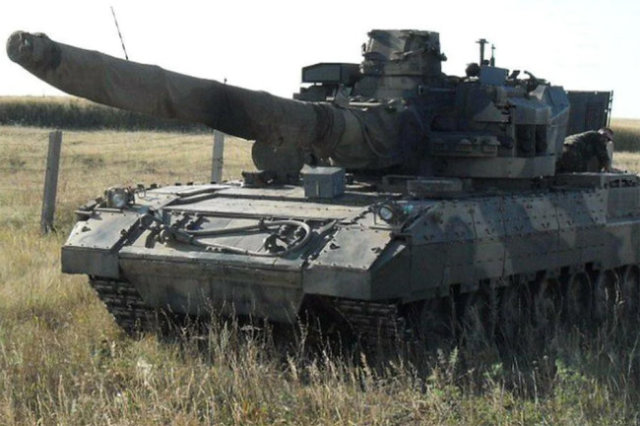Before the end of the Cold War, the Soviet Union developed a prototype of the "supertank", which surpassed all modern NATO tanks in combat capabilities. We are talking about the T-95 or "Object 195", the project largely became the basis for the newest T-14 Armata.
Columnist Charlie Gao called the development of Soviet tank builders "incredibly ambitious." The T-95 was distinguished by survivability, range of destruction and an arsenal much more powerful than that of any predecessor.
The first indicator was achieved due to the fact that the designers placed three crew members in a separate compartment, leaving the tower completely uninhabited.
- This layout has since been adapted for the Armata, but the T-95 became the first tank in which it was used, - the expert notes in the material on the 19FortyFive portal.
In addition to the innovative combat compartment at that time, the "Object 195" used active protection systems, "reactive" and composite armor. For example, the Relict complex, which is now being equipped with Russian armored vehicles, was originally developed for the supertank.
The T-95 turret had a fairly high profile, which greatly expanded the possibilities of aiming the main gun. They were served by a 152-mm smoothbore gun 2A83 with impressive characteristics - the initial velocity of the projectile, for example, was 2 thousand meters per second. The ammunition was also unified with a 152-mm howitzer, which allowed the tank to fire all kinds of artillery shells. Guided missiles were also developed for the gun, which allowed to increase the range.
As an additional weapon, instead of the traditional 7.62-mm or 12.7-mm machine guns, a 30-mm 2A42 cannon was installed on the T-95.
Along with the usual thermal imaging and optical sights, the supertank was also equipped with a radar mounted directly above the barrel. It could be used in conditions of complete lack of visibility, for example, due to smoke on the battlefield. In addition, there are suggestions that the T-95 had significant communication capabilities in combat conditions in order to destroy targets out of sight according to intelligence data from various sources.
Judging by the characteristics, the T-95 seems even more powerful than the T-14 Armata. The newest Russian tank has less powerful main and paired weapons, fewer sighting complexes. However, since the days of the supertank, technology has advanced significantly and, most likely, the T-14 surpasses its prototype in many respects," concluded Charlie Gao.
Timur Alimov


